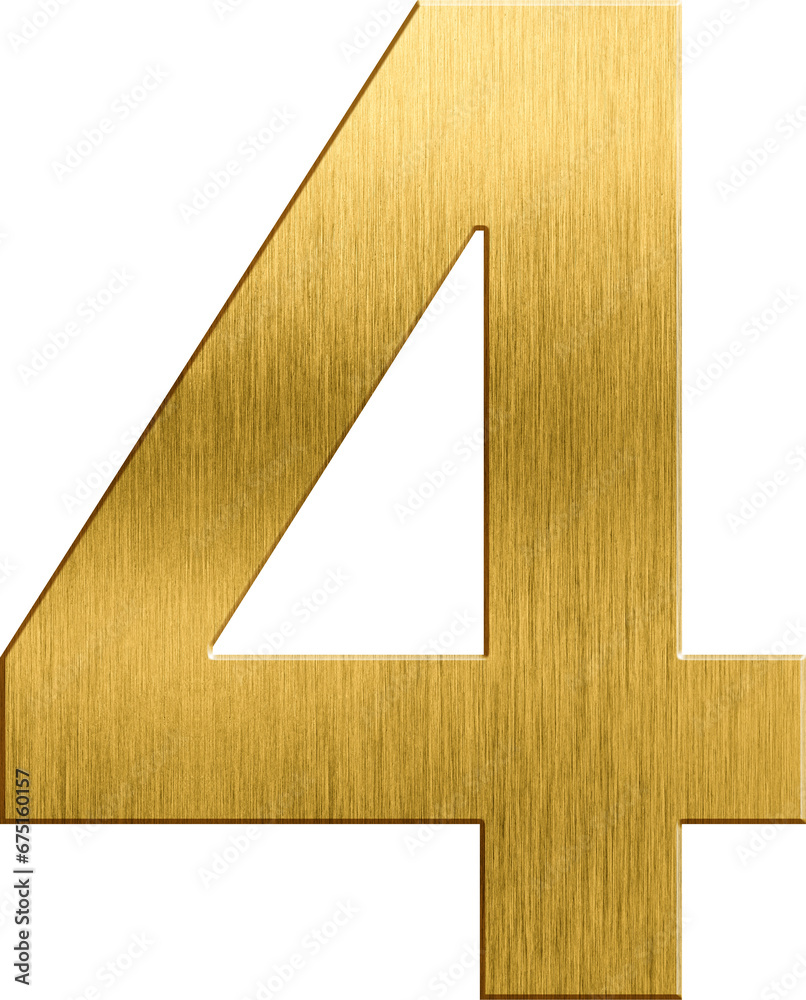📖 Article Content 📖
Have you ever stopped to think about the quiet presence of numbers around us, especially one that seems to pop up everywhere? There's a particular kind of fascination, a sort of low hum, a "4 guard buzz" if you will, that surrounds the simple digit four. It shows up in so many parts of our daily routines and even in some surprising places, making it a rather interesting little fellow to consider.
It's a number that just follows the three and comes before the five, so it's almost like a natural stepping stone in our counting system. Yet, it carries a lot more weight than just its position. From being a building block in mathematics to showing up in the way we talk about the world, it really has a widespread reach.
This small number, which some folks might just pass by without a second thought, actually holds a surprising array of connections and curious details. We're going to take a closer look at what makes this particular digit so special and why it often sparks a bit of interest among people who spend time thinking about such things.
- Who Made This Mess
- Hyperpigmentation Meme Emoji
- Luther Vandross Daughter
- Dog In Sunlight Meme
- Cooking With Safari
Table of Contents
- What Makes the Number Four So Special?
- How Does Four Show Up in Our World?
- Is There a Hidden Meaning Behind the Number 4 Guard Buzz?
- Getting to Grips with the Number Four
What Makes the Number Four So Special?
When we talk about the number four, we are referring to something quite fundamental in our system of counting. It is, to be quite direct, a number, a specific numeral, and a distinct digit that we use every day. It has its own unique place, appearing right after the number three and just before the number five. This position makes it a very ordinary, yet in some respects, quite significant stepping stone in the sequence of numbers we learn as children and use throughout our lives, you know?
Beyond its simple spot in the counting line, the number four possesses some rather interesting mathematical characteristics. For instance, it is what we call a square number, which means it is the result of multiplying a whole number by itself. In this particular case, it comes from two times two, which is a rather straightforward calculation. It also holds the distinction of being the smallest semiprime, which means it is a number that is the product of exactly two prime numbers, counted with multiplicity. And, as a matter of fact, it is also the very first composite number, meaning it is a whole number that can be divided evenly by numbers other than one and itself. So, it's a bit of a foundational piece in how numbers work.
The Basic 4 Guard Buzz – A Simple Spot in the Line
There's a subtle kind of "4 guard buzz" that comes from how this number is perceived in different places. Some cultures, for example, consider it to be a bit of an unlucky number. This perception can lead to some interesting customs or ways of doing things, like avoiding the number four in certain situations or buildings. It's really quite fascinating how a simple numerical value can carry such a weight of cultural belief, isn't that something?
This single digit also forms the basic structure for some really important concepts in mathematics, particularly when we think about plane geometry. The way points and lines interact on a flat surface often relies on principles connected to this number. It's almost like it provides a quiet foundation for how we draw and measure things in that field, a pretty steady base, so to speak. This makes it more than just a number; it’s a building block for visual thinking.
How Does Four Show Up in Our World?
Looking around, you might start to notice how often the number four makes an appearance in the natural world and in systems we’ve created. Think about the cardinal directions, for instance: north, south, east, and west. There are four of them, providing a way to orient ourselves on the globe. Then there are the four seasons that cycle through the year, bringing different weather and changes to the landscape. These are common ways we break down the world around us, and they happen to rely on this particular number, you know.
Beyond these natural occurrences, the number four has even found its way into different counting systems. While we mostly use a base-ten system, there are others, like the duodecimal system, which is based on twelve, and the vigesimal system, which uses twenty as its base. Even in these systems, the number four plays a part in how numbers are grouped or understood, sometimes as a subdivision or a building block within their structures. It’s pretty widespread, actually.
The 4 Guard Buzz of Everyday Patterns
The "4 guard buzz" about its presence in our daily lives means we often learn to recognize and understand the number four from a very young age. It's one of the first few numbers we get to know well, right after one, two, and three. Learning to count up to it and then count back down from it is a pretty standard part of early education. This early exposure helps us get comfortable with its quantity and its visual representation, which is quite important for building a solid grasp of numbers.
Teachers, for instance, have come up with helpful ways to show what four looks like, especially using tools like a ten frame. This is a simple grid with ten spaces, and you can place four counters in it to visually represent the quantity. It makes the idea of "four" much more concrete for young learners, giving them a clear picture of how much it represents. It’s a very practical way to make an abstract idea tangible, in a way.
Is There a Hidden Meaning Behind the Number 4 Guard Buzz?
In the world of pure mathematics, the number four is, as we mentioned, an even number, meaning it can be divided by two without anything left over. It is also, as we touched on, the smallest composite number, which means it has more than two factors (numbers that divide into it evenly). Its factors are one, two, and four itself. This characteristic sets it apart from prime numbers, which only have two factors: one and themselves. It’s a pretty fundamental distinction, actually.
Furthermore, four is the second square number, following one. One is one times one, and four is two times two. This pattern of numbers that come from multiplying a whole number by itself creates a sequence that is very important in many areas of mathematics. It’s a simple concept, yet it has far-reaching implications for how we understand shapes, areas, and other mathematical ideas. This makes it a really interesting point of study for many, you know.
Cultural Curiosities and the 4 Guard Buzz
When we consider the "4 guard buzz" around its various meanings, we can find a lot of information about the number four. There are many ways to describe it, or what we might call synonyms, depending on the context. Its pronunciation is pretty straightforward, and its translation across different languages generally keeps its core meaning as a quantity. If you look it up in an English dictionary, you’ll find its definition clearly laid out, often describing its numerical value and its place in the counting system. It’s a pretty well-defined concept, all things considered.
Many resources serve as a helpful guide to the number four, explaining that it is an even composite number. They often point out that it is composed of a single prime number, two, multiplied by itself. This simple fact about its makeup is quite significant in number theory. It helps us understand how numbers are built from prime components, which is a big part of mathematical study. So, it's not just a number, but a window into how numbers are structured, basically.
Getting to Grips with the Number Four
For those involved in science, technology, engineering, and mathematics (STEM), the number four offers plenty of mathematical information. This includes details about its prime factorization, which is the process of breaking down a number into its prime factors. For four, this is simply two times two. There are also many fun facts and pieces of numerical data connected to it that can be used for educational purposes. It’s a rather useful number for teaching basic concepts and sparking curiosity in young minds, in a way.
Beyond its purely mathematical aspects, some folks discover a truly fascinating side to the number four. This involves looking at its deeper meanings and how it shows up in various parts of human experience. People explore its facts, of course, but also its religious significance in different faiths around the globe. It can appear in stories, symbols, and rituals, carrying specific symbolic weight for believers. This broader view gives it a really rich context, so to speak.
The 4 Guard Buzz of Learning and Understanding
The "4 guard buzz" extends to how some people interpret the number four as an angel number, believing it carries messages or guidance from spiritual sources. This is a more personal and intuitive way of relating to numbers, where they are seen as more than just quantities. It's interesting how different people find meaning in numbers in such varied ways, isn't it? This spiritual perspective adds another layer to its perceived importance.
Furthermore, the number four has a role in arts and literature. It can be found in the structure of poems, the rhythm of music, the composition of paintings, or as a recurring motif in stories. Authors and artists might use it to convey balance, stability, or completeness, perhaps. Its presence in creative works often goes unnoticed by many, but for those who look closely, it adds a subtle layer of meaning and structure. A small minority of people, it seems, truly appreciate these deeper connections and spend time pondering them, finding a quiet satisfaction in these discoveries.
So, we've explored the number four, from its simple place in counting to its mathematical characteristics as a square, semiprime, and composite number. We've considered its cultural associations, like being seen as unlucky, and its foundational role in areas such as plane mathematics, cardinal directions, and seasons. We also looked at how it's taught, its mathematical properties as an even and composite number, and its prime factorization. Finally, we touched on its broader meanings, including religious significance, angel number interpretations, and its appearance in arts and literature.



